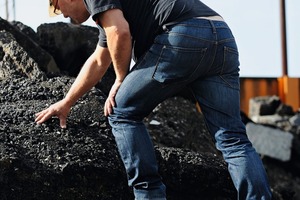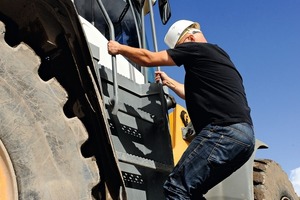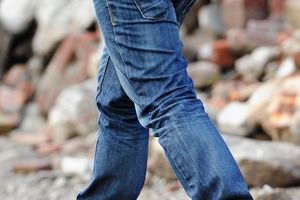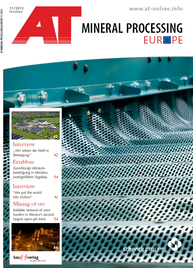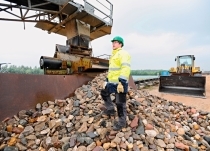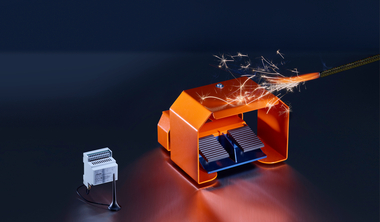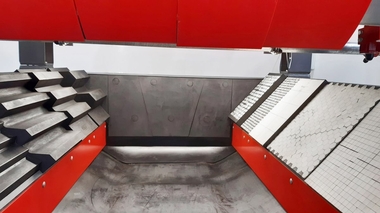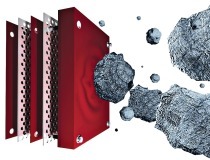Reliably protected by wearing safety shoes
Day-to-day working at concrete plants, landfills, gravel plants and quarries can really take its toll on the workers there. And on their footwear too. This has to protect against injury as well as bad weather conditions and at the same time fit comfortably. Good safety shoes, however, provide more than that. As Frank Geerling from Remex GmbH in Emmerich on the River Rhine knows, good protection against accidents involving twisting of the ankle joint is the be all and end all when it comes to working with bulk solids (Fig. 1).
“Working with building rubble and other secondary resources is associated with a number of accident risks,” says Frank Geerling, talking about day-to-day operations. He is Operations Manager at Remex, a specialist in the disposal, recycling and processing of mineral waste. “We work here a lot with heavy rocks, which can even weigh several hundreds of kilos. If you aren’t adequately protected, the consequences can be very serious.” For instance, if a pile of rocks tips up and falls on your foot, your toes can be crushed. And carelessly stepping on a nail can have just as painful consequences. So for good reason, safety shoes of the S3 protection class are therefore obligatory. According to the standard EN 20345, these must be fitted with a toe-cap and a penetration-proof mid-sole.
It goes without saying that safety shoes should reliably protect feet against injuries (Fig. 2). But so the work doesn’t feel like torture, they should also be comfortable. If the fit isn’t right, the result is tired, bruised and blistered feet. This tends to impair work performance; for that reason Geerling relies on high-quality foot protection from Germany: “I wear safety shoes from Elten. They fit perfectly and are very comfortable.”
But for Frank Geerling, proper foot protection must have another feature: “We often work in rain and frequently have to stand in mud. It is therefore important to me that I don’t get wet feet in my safety shoes.” He therefore wears models made of hydrophobized full-grain cowhide leather. This surface material is particularly water-repellent. Moreover the fewer seams there are, the less dust, rubble or sludge that can build up. “In addition my shoes have extra toe protection so that they don’t wear so quickly in this area.”
With regard to their protective functions, good safety shoes often offer more than the relevant standards demand. When he’s working, Frank Geerling wears protective shoes with a special Biomex plastic cuff to prevent twisting of the ankle joint (Fig. 3): “It stabilizes the joint. On the often shaky terrain on which we constantly have to walk, that’s a real advantage.” But another aspect of safety footwear is important to Geerling: “I have people working here whose shoes have to be orthopedically fitted. With shoes from Elten, that’s no problem.” Orthopaedic modifications to protective footwear are no longer the exception; around 10 % of employees in Germany rely on insoles or bigger modifications such as heightened heels – and the trend points upwards. What many workers don’t know, however, is that it is not enough to take an insole out of your home shoe and put it in your work shoe; any improper changes to the safety shoe can invalidate its type test and in the worst possible case the shoe may no longer meet statutory and insurance requirements. Then there would be no insurance protection.
Reputable shoe manufacturers, however, offer the possibility to rework the shoes to preserve insurance protection – orthopaedic insoles and raised soles are no problem today. So around 90 % of safety footwear from Elten is approved for orthopaedic fitting. “For me, there are no excuses for not wearing protective footwear at work,” sums up a satisfied Frank Geerling. After all, as Operations Manager, he’s the one responsible for compliance with safety regulations on site.

